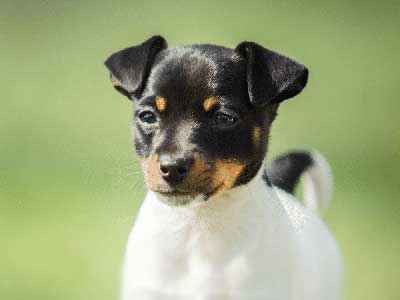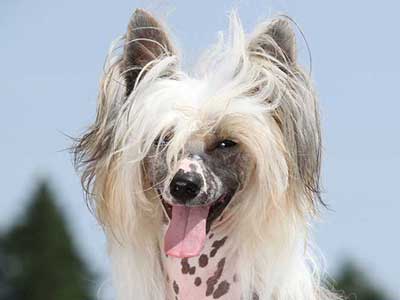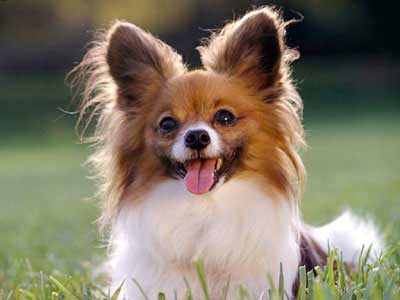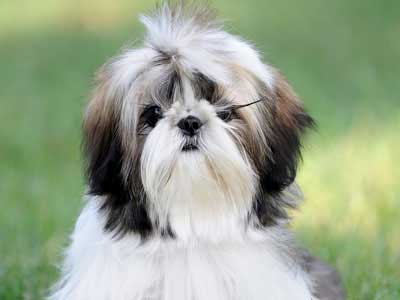Japanese Chin
Breed Information |
|
|---|---|
| Popularity |
2022: #105 2021: #105 2020: #111 2019: #108 2018: #104 2017: #108 2016: #108 2015: #97 |
| Name | Japanese Chin |
| Other names | Chin, Japanese Spaniel |
| Origin |  Japan Japan |
| Breed Group |
Toy (AKC:1888) Companion Dogs (UKC) |
| Size | Smallest |
| Type | Purebred |
| Life span | 10-12 years |
| Temperament |
Alert Cat-like Independent Intelligent Loving Loyal Playful |
| Height | 7-11 inches (18-28 cm) |
| Weight | 4-15 pounds (2-7 kg) |
| Colors |
Black & White Lemon & White Sable & White White & Black |
| Litter Size | 1-3 puppies |
| Puppy Prices |
Average $1500 - $2500 USD The average cost of a purebred Japanese Chin from a responsible, reputable and knowledgeable breeding is between $1,500.00 - $2,500.00 depending on the pedigree of the puppies. |
Breed Characteristics |
|
|---|---|
| Adaptability |
5 stars |
| Apartment Friendly |
5 stars The Japanese Chin is a good dog for apartment life. They are moderately active indoors and will do okay without a yard. This breed is somewhat sensitive to temperature extremes. |
| Barking Tendencies |
1 stars Rare |
| Cat Friendly |
5 stars |
| Child Friendly |
2 stars Not Good with Kids: In isolation, this dog breed might not be the best option for kids. However, to mitigate the risks, have the puppy grow up with kids and provide it with plenty of pleasant and relaxed experiences with them. This breed is also very friendly toward other pets and very friendly toward strangers. |
| Dog Friendly |
3 stars |
| Exercise Needs |
1 stars Chins do not require a great deal of exercise, however they do need to be taken on a daily walk. They will enjoy the opportunity to play in an open yard. |
| Grooming |
3 stars Moderate Maintenance: Regular grooming with a brush and comb (twice a week) is required. To keep the coat white, the dog needs to be washed periodically. |
| Health Issues |
3 stars Hypoallergenic: NoThe Japanese Chin Club of America estimates Chins have a typical lifespan of 10–12 years, with some living to 15 or more. A UK Kennel Club survey puts their median lifespan at 9.25 years. |
| Intelligence |
3 stars Ranking: #62 Full Ranking List |
| Playfulness |
3 stars |
| Shedding Level |
3 stars Moderate Shedding: Expect this dog to shed regularly. Be prepared to vacuum often. Brushing will reduce shedding as well as make the coat softer and cleaner. |
| Stranger Friendly |
5 stars |
| Trainability |
2 stars Moderately Easy Training: Keep in mind that this dog can have a slight stubbornness. However, there should be no difficulty training it. |
| Watchdog Ability |
3 stars |
Japanese Chin Names |
||
|---|---|---|
| Rank | Boy Names | Girl Names |
| 01 | Max | Lucy |
| 02 | Jake | Olive |
| 03 | Milo | Lola |
| 04 | Oliver | Ruby |
| 05 | Leo | Zoe |
| 06 | Rocco | Ella |
| 07 | Duke | Emma |
| 08 | Sam | Kona |
| 09 | Buster | Coco |
| 10 | Loki | Millie |
| 100 Cute Puppy Names › | ||
Overview |
|---|
|
Small, lively and aristocratic, the Japanese Chin is a square-proportioned small dog. It has a bright, inquisitive expression — distinctly Oriental. A small amount of white shows in the inner corners of the eyes, imparting a look of astonishment. Its gait is stylish, lively and light. The single coat is abundant, straight and silky, tending to stand out from the body. The overall appearance is one of Oriental aristocracy. The Japanese Chin is a devoted companion, relishing a warm lap as much as a boisterous game. It is sensitive and willing to please, tending to shadow its owner. It is a friend to all: strangers, dogs and pets. Its playfulness and gentleness make it a good child's companion for equally gentle children. The breed has been described as almost catlike — some even climb. |
History |
|
Originally called the Japanese Spaniel, and still called that name by some clubs, the Japanese Spaniel was renamed "Japanese Chin" by the AKC in 1977. The Japanese Chin is first and foremost bred as a companion dog. Despite the name "Japanese" the breed is native to the land of China. It was later developed in Japan and introduced to Europe in 1700. It became a favorite of Japanese nobility, and was often offered as a royal gift to diplomats and to foreigners who rendered some outstanding service to Japan. In 1853 a pair was given as a gift to Queen Victoria from Commodore Perry when he returned from his historic mission to open Japan to world trade. |
References
- [1] ^ YouTube: Top Dog Facts About the JAPANESE CHIN
- [2] ^ Japan Kennel Club: Japanese Chin (Japanese: 狆, chin) Breed Standard





